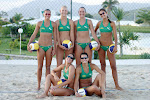

Propriocepção é definida como a sensação de movimento (cinestesia) e posição (senso posicional) articulares baseada em informações de outra fontes que não seja visual, auditiva ou cutânea. Esse mecanismo neuromuscular foi proposto por Sherrington , em 1906, para descrever todas informaçoes neurais originadas das articulações, músculos e tendões. De acordo com a descrição encontrada na literatura a respeito de Propriocepção, esse parece ser um mecanismo que envolve processamento de informações. Assim, tem sido sugerido que as informações sobre o grau de de modificação mecânica das estruturas articulares captadas pelos mecanorreceptores são enviadas ao sistema nervoso central (SNC), onde são processadas, auxiliando na detecção do movimento e conhecimento da posição da articulação no espaço.
As estruturas responsáveis por captar a informação proprioceptiva são os receptores musculares (fuso muscular e órgão tendinoso de golgi) e os receptores presentes na cápsula, ligamentos e meniscos. (foto abaixo).

Objetivo do Treino Proprioceptivo:
O objetivo do treinamento proprioceptivo é cinestésico é restaurar as propriedades sensoriais das estruturas articulares e ligamentares lesionadas ou não e melhorar a sensibilidade dos aferentes, que levam informação sensorial para o córtex cerebral.
Como ocorre esse processo?
Quando pisamos numa superfície irregular, os proprioceptores detectam essa mudança e enviam essas informações para o cérebro, aonde são processadas. O cérebro, então, "orienta" os componentes articulares envolvidos a se reajustarem à nova situação para manter o equilíbrio. Chamamos essa resposta de controle neuromuscular.
Reestabelecendo o Controle Neuromuscular
É importante considerar que os exercícios de controle neuromuscular (proprioceptivo) devem se fazer presente no processo de recuperação e na prevenção de atletas e na vida cotidiana de pessoas não atletas. Em sendo atletas ou praticantes de atividade desportivas regulares, estes são necessários para restabelecer o controle e eficiência biomecânica do movimento, atividades que geram instabilidades para ganhar "estabilidade funcional". Neste caso, deve-se incluir exercícios que envolvam posicionamentos e manobras em que a articulação fica vunerável, adaptando as tarefas de movimento próximas do gestual motor desportivo utilizado no esporte que atua.
Proprioception is defined as the sensantion of movement (kinesthesia) and position (position sense) joint based on information from sources other than visual, auditory or cutaneous. The neuromuscular mechanism was prposed by Sherrington in 1906 to describe all neural information originating in joints, musclus and tendons. According to the description found in the literature on proprioception, this seems to be a mechanism that involves information processing. Thus, it has been suggested that information on the degree of modification of mechanical structures captured by the joint mechanoreceptors are sent to the central nervous system (CNS), where they are processed, and knowledge of joint position in space.
The structures responsible for capturing the proprioceptive information are the muscle recptors (muscle spindle and golgi tendon organ) and receptors present in the capsule,ligaments and meniscus.
Goal of Proprioceptive training:
The training goal is to restore is kinesthetic proprioceptive sensory properties of articular structures and ligaments injured or not improve the sensitivity of the afferent,sensory informstion leading to the cerebral cortex.
As this process?
When stepped on an uneven surface,the proprioceptors detect this change and send that information to the brain, where they are processed. the brain then "guides" the joint components involved to readjust to the new situation to maintain balance. We call this response of neuromuscular control.
Reestablishing neuromuscular control
It is important to consier the execise of neuromuscular control (proprioceptive) must be present in the recovery process and prevention of athletes and everyday life of people notatheletes. on being athletes or regular sporting activity practitioners, these are needed to restore control and biomechanical efficiency of movement, activities that create instabilities to win "functional stability".
In this case, you should include exercises that involve positions and maneuvers in which the joint is failed affair, adapting the tasks of movement near the sign used in motor sports operates.






.jpg)



.jpg)

Julinhoooo!!!! ta mt maneiroooo!!!! vamos divulgar!!! parabéns! bjão
ResponderExcluir